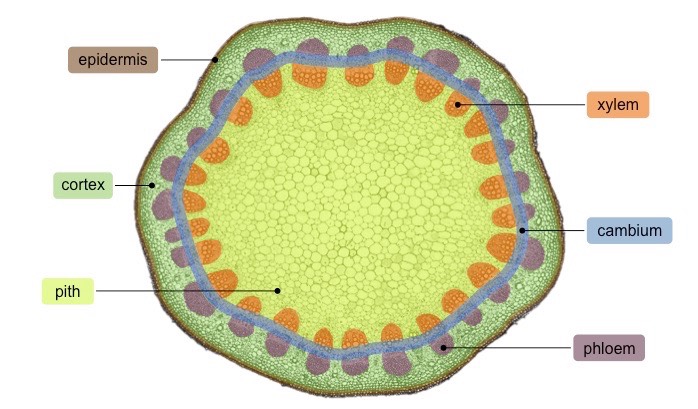Below is a microscopic cross-section of a typical stem (taken from a dicotyledonous plant)
- Distribution of tissues may differ between plant types (e.g. vascular bundles are scattered in monocotyledons)


Click on the above image to show / hide labels
Key Features:
- The epidermis covers the outer surface and functions to waterproof, protect the stem and control gas exchange
- The ground tissue (cortex and pith) is found internally and assist in the transport and storage of materials within the stem
- The cambium is a centrally located, circular layer of undifferentiated cells responsible for lateral growth of the stem
- Vascular bundles are arranged in bundles near the outer edge of the stem to resist compression and bending
- The xylem is located to the interior side of the bundle and the phloem is on the exterior side (phloem = outside)
